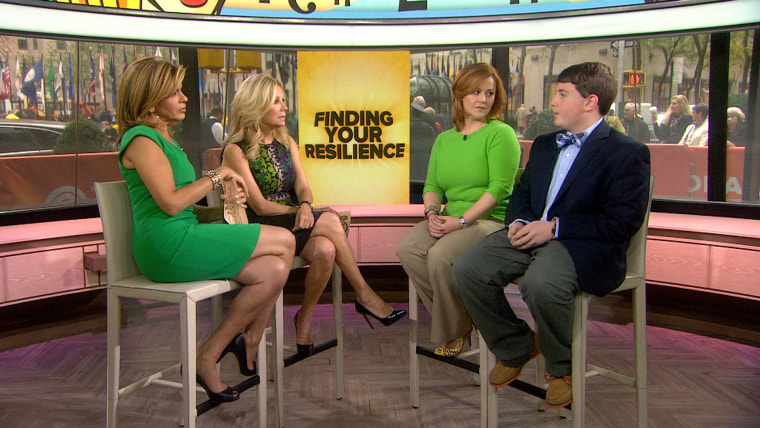Psychologist Dr. Jennifer Hartstein visited Kathie Lee and Hoda Wednesday along with Alexander Levy, a 15-year-old high schooler who is the teen ambassador for the organization STOMP Out Bullying. Hartstein and Alexander had an important message for the ladies and their viewers, too: Don't let negative people get you down.
But when people try to push you around, where do you find the resilience to stand up to them? Hartstein has six suggestions:
1) List the Positives: Create a list of the positive people in your life, or who are in the life of your child. When dealing with negative people, it is easy to see only them, and to forget about the positive ones. We really discount the good stuff. If you can list the good things that are going on in your life, and the people who support that, it increases your confidence.
2) Validate: Feelings are valid, even if you don't agree with, or understand them. Be sure to validate your child's feelings, and your own. Allowing your child to experience his feelings is so important in helping him to understand them, and then how to deal with them effectively. Validating your own feelings if you are on the receiving end of the bullying is also important. The more you can validate, recognizing that your feelings make sense given a situation, the more helpful it is and the more understood you feel. That only helps you navigate those tough waters, as you feel less alone.
3) Problem-Solve: As you recognize your feelings, and validate that they make sense, you need to figure out what to do. Often we jump to this too quickly, creating more anxiety and fear; instead, the first thing to do is to really define what the problem is, and try to understand it with your child. Then, brainstorm solutions: can you ignore the other person? Can you ask the other person to "stop?" Can your child surround himself or herself with positive people? Of course, safety is key, so if these solutions don't work, you may have to involve someone else to help. For an adult, it is important to do the same kinds of things, just in a slightly different way.
4) Be Skillful: Bullies pick on people who are different in some way, or who possess something that they might not. The more confident you can appear (even if you are acting "as if"), the better. Stand tall. Make eye contact. Walk with confidence. Teach this to your child, and use it yourself. If you know you need to confront your boss, who you feel is always going after you, role-play it with a friend (kids can do this too, and often love it).
5) Monitor Social Media: In the age of the Internet, we cannot stress enough its power and vastness, for children and adults alike. It's important to monitor a child's usage to help avoid any digital drama that might arise, and it's important for adults to be mindful of what they post, too: It could come back around. Use the Web intelligently,and it will promote safety.
6) Speak up: Don't be afraid to ask for help. Teach your children the same. Sometimes, you just can't do it alone.
